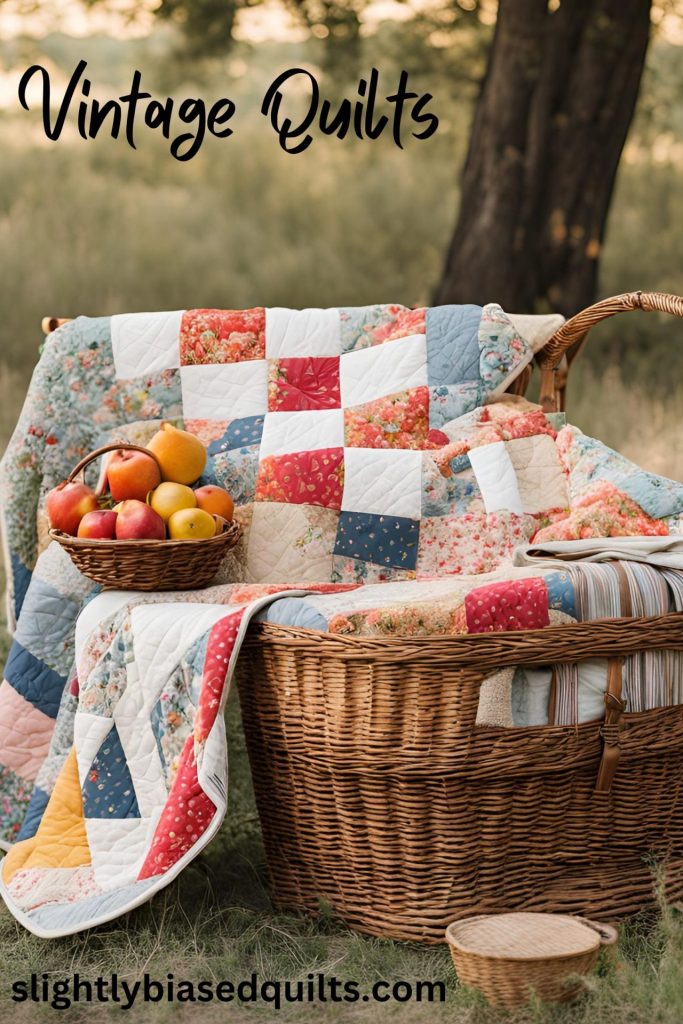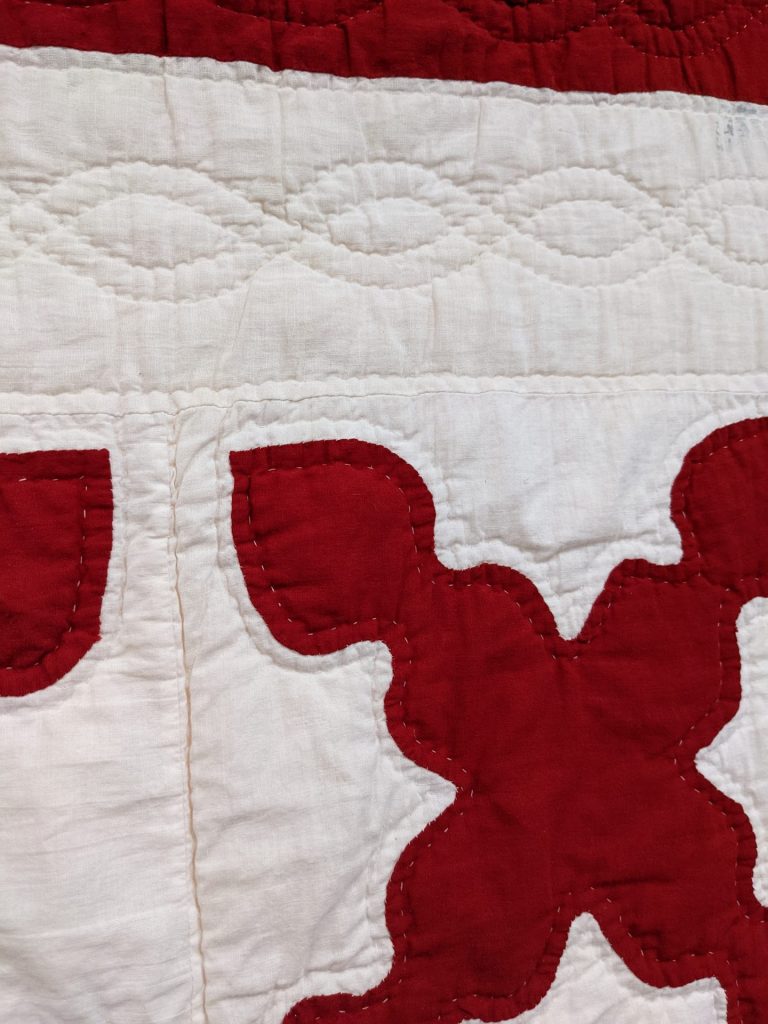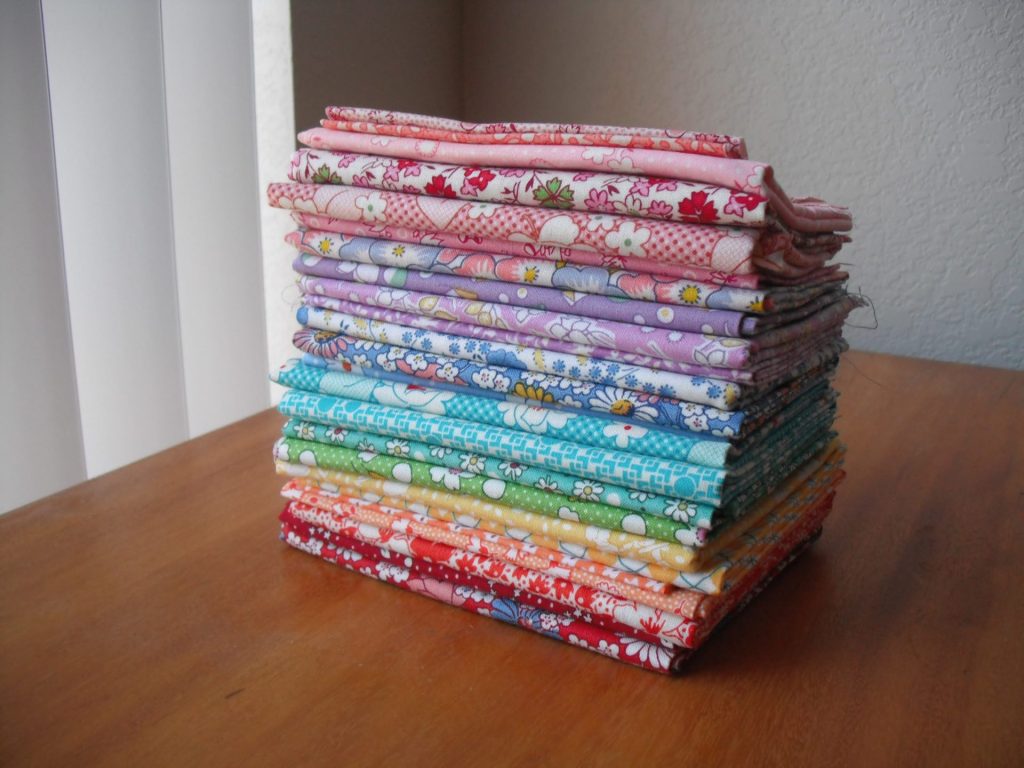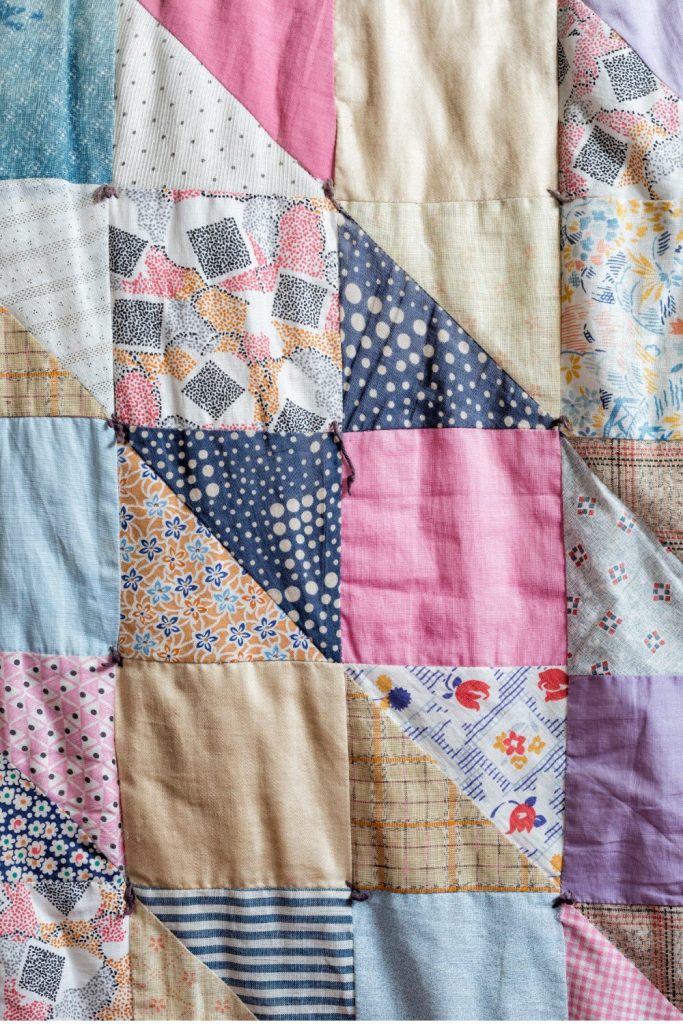
There’s something truly special about vintage quilts. Whether it’s their rich history, intricate designs, or the connection they offer to the past, vintage quilts evoke a sense of nostalgia and admiration in all of us. These handmade treasures carry stories of the past, often spanning generations, and bring warmth—not just in a physical sense, but in the way they connect us to those who came before.
Here are some of the reasons why we adore vintage quilts and why they continue to hold a cherished place in the hearts of quilters and collectors alike.

The Craftsmanship
Quilting in the past was a skill often passed down through generations, and each quilt was meticulously crafted by hand. Without the aid of modern tools, these quilters demonstrated incredible precision, patience, and talent. Every stitch reflects the labor and love of its maker, and seeing this craftsmanship up close is a reminder of the artistry involved in quilt-making. Vintage quilts show us the beauty of traditional techniques like hand piecing, hand quilting, and appliqué.

Vintage Fabrics
One of the most delightful aspects of vintage quilts is the fabrics themselves. From feed sacks to fabric scraps saved from worn-out clothing, vintage quilts often incorporate textiles that are no longer produced. These unique materials offer a window into the fashion and everyday life of past generations. The colors, patterns, and textures reflect the era, making each quilt a historical piece in itself.
The Stories They Tell
Each vintage quilt holds a story. Whether it was created as a wedding gift, a utilitarian bedcover for a family home, or a collaborative piece stitched together by a group, quilts have long been a way to commemorate important life events. Sometimes the story is lost to time, but the quilt remains as a testament to the hands that made it. Vintage quilts allow us to imagine the lives of those who stitched them and the moments they witnessed. This connection to the past gives us a sense of continuity and shared history.
The Charm of Imperfections
In a world where perfection is often the goal, vintage quilts remind us of the beauty in imperfection. These quilts were made by real people—working without the precision tools we have today. Misaligned seams, faded fabrics, and patched areas tell a story of practical use and real life. These imperfections give vintage quilts their unique charm and character. They remind us that quilting is not just about the final product but about the journey, the effort, and the love poured into every piece.
Nostalgia and Sentimentality
For many of us, vintage quilts bring up feelings of nostalgia. They may remind us of our grandparents’ homes, warm nights tucked under a hand-stitched cover, or family gatherings. The sight of a vintage quilt can transport us back to simpler times when quilting was a communal activity and each quilt held a special meaning. Collecting or working with vintage quilts allows us to hold onto a piece of that cherished past.
Inspiration for Modern Quilts
Vintage quilts continue to inspire modern quilters. Many of today’s quilt patterns and techniques have their roots in traditional designs, and studying vintage quilts helps us appreciate the foundation of quilting as we know it. Whether it’s a specific block, color palette, or method of construction, vintage quilts provide endless inspiration for new projects. By incorporating elements of the past, we keep the legacy of quilting alive.
Sustainability and Reuse
In today’s world, there’s a growing emphasis on sustainability, and vintage quilts align beautifully with this ethos. By preserving and cherishing these quilts, we honor the idea of reusing materials, reducing waste, and valuing handmade items. Vintage quilts often made use of fabric scraps and leftovers, embodying the principles of resourcefulness that remain relevant today.
Connecting To The Past
Preserving the beauty and integrity of a vintage quilt requires careful handling and attention. These quilts, often made decades (or even centuries) ago, are fragile due to the natural wear and tear of time. With proper care, however, you can extend the life of these cherished pieces and even restore some of their former glory. Here are some tips for both caring for and restoring vintage quilts.

Caring for Vintage Quilts
Gentle Cleaning: Vintage quilts should be handled delicately. Avoid machine washing, as it can cause fabric to fray or weaken. Instead, spot clean small areas using a soft cloth, cool water, and mild soap. For a full clean, hand washing in a bathtub with gentle quilt soap is the safest method. Air-drying is recommended, laying the quilt flat on a clean surface to avoid stress on the fibers.
Proper Storage: When not in use, store vintage quilts in a cool, dry space. Avoid plastic bags or airtight containers, as quilts need to breathe to prevent mildew. Acid-free tissue paper or cotton pillowcases are ideal for wrapping and protecting the quilt. The use of cedar balls can also help with freshness and keeping unwanted pests away. If folding is necessary, refold it periodically to prevent permanent creases and fabric breakdown.
Displaying Vintage Quilts: If you plan to display your vintage quilt, avoid prolonged exposure to direct sunlight, as this can fade colors and weaken fabrics. Hanging a quilt on a rod with a sleeve or using archival-quality quilt hangers can minimize stress on the quilt. If you want to drape it over furniture, ensure the surface is clean and free from rough edges that might snag the fabric.
Restoring Vintage Quilts
Assess the Damage: Before starting any restoration, carefully inspect the quilt for weak spots, holes, or fraying seams. Restoration can range from minor repairs, like re-sewing a seam or patching a small hole, to more complex work like replacing worn fabric blocks. If the quilt is highly fragile, it might be best to leave it in its current state to avoid causing further damage.
Use Period-Appropriate Materials: When restoring a vintage quilt, try to match the fabric and thread as closely as possible to the original. Look for vintage fabrics or reproduction prints that reflect the era of the quilt. The goal is to preserve the quilt’s authenticity while repairing the damaged areas.
Hand Stitching Repairs: For small repairs, hand stitching is the gentlest method. Use fine needles and soft cotton thread to reinforce seams or patch holes. Take care to follow the original stitching patterns to maintain the quilt’s integrity.
Caring for and restoring vintage quilts takes time and patience, but it’s a rewarding process that ensures these heirloom treasures are preserved for future generations. With gentle care and thoughtful restoration, you can honor the history stitched into each piece, maintaining its beauty and functionality for years to come.
A Love That Endures
Vintage quilts are more than just pieces of fabric sewn together—they are memories, history, and art. Their enduring appeal lies in the stories they tell, the craftsmanship they showcase, and the emotions they evoke. Whether you’re a collector, a maker, or simply an admirer, vintage quilts offer a timeless connection to the past and a lasting reminder of the beauty found in every stitch.
So next time you find a vintage quilt at a flea market, in an attic, or in your own family’s collection, take a moment to appreciate the love, labor, and legacy stitched into its very seams. And maybe you can even honor the past by bringing a vintage quilt back to its glory past.
